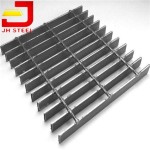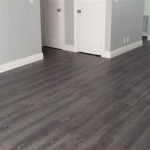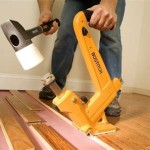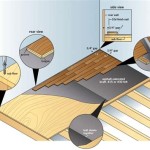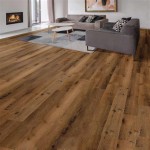Parquet Flooring Repair in Malaysia: A Comprehensive Guide
Parquet flooring, a timeless and elegant choice for Malaysian homes and businesses, adds warmth and character to any space. Its intricate geometric patterns and natural wood grain create a sophisticated aesthetic. However, like all flooring materials, parquet is susceptible to damage over time due to wear and tear, moisture exposure, and accidental impacts. This article provides a comprehensive overview of parquet flooring repair in Malaysia, detailing common issues, repair techniques, and preventative measures to ensure the longevity and beauty of this valuable flooring. Understanding the nuances of parquet repair is crucial for maintaining its aesthetic appeal and structural integrity, ultimately preserving the value of the property.
Common Problems Affecting Parquet Flooring in Malaysia
The humid climate and diverse lifestyle practices in Malaysia contribute to specific challenges for parquet flooring. Understanding these common problems is the first step in addressing and preventing damage.
Moisture Damage: High humidity levels are a constant threat. Water spills, leaks, and inadequate ventilation can lead to moisture absorption by the wood. This can cause warping, cupping (where the edges of the parquet blocks rise), crowning (where the center of the parquet blocks rise), and even fungal growth. The type of wood used and the quality of the sealant significantly impact the flooring's susceptibility to moisture damage. Regular inspection and prompt action in addressing any spills are essential for preventing long-term damage.
Scratches and Dents: Daily foot traffic, moving furniture, and accidental drops can cause scratches and dents on the surface of the parquet flooring. While minor scratches might only affect the aesthetic appearance, deeper scratches and dents can compromise the protective sealant, making the wood more vulnerable to moisture and further damage. The severity of the damage dictates the required repair technique, ranging from simple surface refinishing to individual block replacement.
Loose or Missing Blocks: Over time, the adhesive holding the parquet blocks in place can weaken, leading to loose or missing blocks. This is often caused by moisture penetration eroding the adhesive or by physical impact. Missing blocks not only detract from the overall appearance but also create trip hazards and expose the subfloor to potential damage. Replacing these blocks promptly is crucial to maintain the floor's structural integrity and prevent further damage.
Fading and Discoloration: Exposure to direct sunlight can cause the parquet flooring to fade or discolor over time. This is particularly noticeable in areas near windows or glass doors. The type of wood and the finish used influence the rate of fading. Implementing preventative measures such as using curtains or blinds can mitigate the effects of sunlight exposure.
Termite Infestation: While less common than other issues, termite infestation can be a serious problem for parquet flooring. Termites feed on wood, causing significant structural damage if left unchecked. Regular inspections for signs of termite activity, such as mud tubes or hollow-sounding wood, are essential. Professional pest control services are necessary to eradicate termite infestations and prevent further damage.
Parquet Flooring Repair Techniques
The appropriate repair technique depends on the type and extent of the damage. A careful assessment is necessary to determine the most effective and cost-efficient solution.
Surface Repair for Scratches and Dents: Minor scratches and dents can often be repaired through surface refinishing. This involves sanding down the affected area to create a smooth surface and then applying a new layer of sealant or finish. For minor scratches, a touch-up paint or stain that matches the existing color can be used. For deeper scratches or dents, wood filler can be used to fill the damaged area before sanding and refinishing. The key is to match the existing color and finish as closely as possible to ensure a seamless repair.
Replacing Loose or Missing Blocks: Replacing loose or missing parquet blocks requires careful removal of the old block (if present), preparing the subfloor, and installing a new block with appropriate adhesive. Matching the existing wood species, grain, and color is crucial for a seamless repair. The adhesive should be compatible with both the wood and the subfloor. Proper clamping and curing time are essential to ensure a strong and lasting bond. In cases where the original blocks are difficult to source, salvaged blocks from similar flooring can be used or new blocks can be stained to match the existing color.
Repairing Water Damage: Repairing water-damaged parquet flooring can be complex, depending on the extent of the damage. Minor water damage may only require drying and refinishing. However, if the wood is warped or rotted, it may need to be replaced. In cases of severe water damage, the entire floor may need to be replaced. Identifying and addressing the source of the water leak is crucial to prevent recurrence. Installing proper ventilation can also help to reduce humidity levels and prevent future water damage.
Addressing Fading and Discoloration: While reversing fading and discoloration is often impossible, refinishing the entire floor can create a uniform color. Before refinishing, it's crucial to protect the floor from further sunlight exposure by using curtains, blinds, or UV-resistant window film. Applying a stain with UV inhibitors can also help to slow down the fading process. Regular cleaning and maintenance can help to preserve the color and finish of the flooring.
Termite Control and Repair: Addressing termite infestation requires professional pest control services. Once the termites have been eradicated, damaged parquet blocks should be replaced. It's also important to inspect the surrounding area for any signs of further damage. Implementing preventative measures such as regular termite inspections and using treated wood can help to prevent future infestations. Ensuring proper ventilation and moisture control can also help to reduce the risk of termite infestation.
Preventative Measures to Protect Parquet Flooring
Prevention is always better than cure. Implementing preventative measures can significantly extend the lifespan and maintain the beauty of parquet flooring.
Regular Cleaning and Maintenance: Regular sweeping or vacuuming removes dirt and debris that can scratch the surface of the flooring. Damp mopping with a mild detergent specifically designed for wood floors is also recommended. Avoid using excessive water, as this can damage the wood. Promptly clean up any spills to prevent water damage. Using appropriate floor mats at entrances can help to trap dirt and moisture before they reach the flooring.
Controlling Humidity Levels: Maintaining a consistent humidity level is crucial for preventing warping and other moisture-related problems. Using a dehumidifier during humid weather can help to control humidity levels. Ensuring proper ventilation, especially in areas prone to moisture, such as bathrooms and kitchens, is also important.
Protecting Against Scratches and Dents: Using furniture pads under the legs of chairs and tables can prevent scratches when moving furniture. Avoid wearing shoes with high heels or hard soles on the parquet flooring. Placing rugs or mats in high-traffic areas can provide additional protection against wear and tear.
Protecting Against Sunlight: Using curtains, blinds, or UV-resistant window film can help to protect the flooring from direct sunlight exposure. Rotating rugs and furniture periodically can also help to prevent uneven fading.
Regular Inspections: Conducting regular inspections of the flooring can help to identify potential problems early on, allowing for prompt action and preventing further damage. Look for signs of moisture damage, scratches, dents, loose blocks, and termite activity. Addressing these issues promptly can save time and money in the long run.
Professional Maintenance: Periodic professional cleaning and refinishing can help to maintain the beauty and longevity of parquet flooring. Professional cleaning can remove stubborn dirt and grime that regular cleaning cannot. Refinishing can restore the original luster and protect the wood from further damage. Consulting with a reputable flooring contractor can help to determine the best maintenance schedule for specific needs.
By understanding the common problems, appropriate repair techniques, and preventative measures, homeowners and businesses in Malaysia can effectively maintain and preserve their parquet flooring, ensuring its beauty and value for years to come. Adopting a proactive approach to parquet flooring care is essential for maximizing its lifespan and minimizing the need for costly repairs.

Parquet Floor Repair Kuala Lumpur Selangor Restoration

Parquet Flooring

Floor Repair In Kuala Lumpur Selangor Fix Home Flooring

Timber Flooring Parquet Jb Johor Bahru Masai Malaysia Service Repair Supplier Installer Renovation Amp Tiles Stonecare Sdn Bhd

Flooring Wood Floor Repair Diy Home Parquet

Brown Square Pvc Vinyl Wooden Flooring 10 20 Mm At Rs In Nagpur

Wood Floor Staircase Repair Polish Flooring For Parquet Selangor Malaysia Kuala

Repair Old Parquet

Flooring Installation Malaysia Merbau Floor For Home

Timber Floor Repair And Polish Klang Valley Parquet Flooring Selangor Malaysia Kuala Lumpur Kl Petaling
Related Posts

